checkStyle的使用
checkStyle在idea中的应用手册
1 安装配置
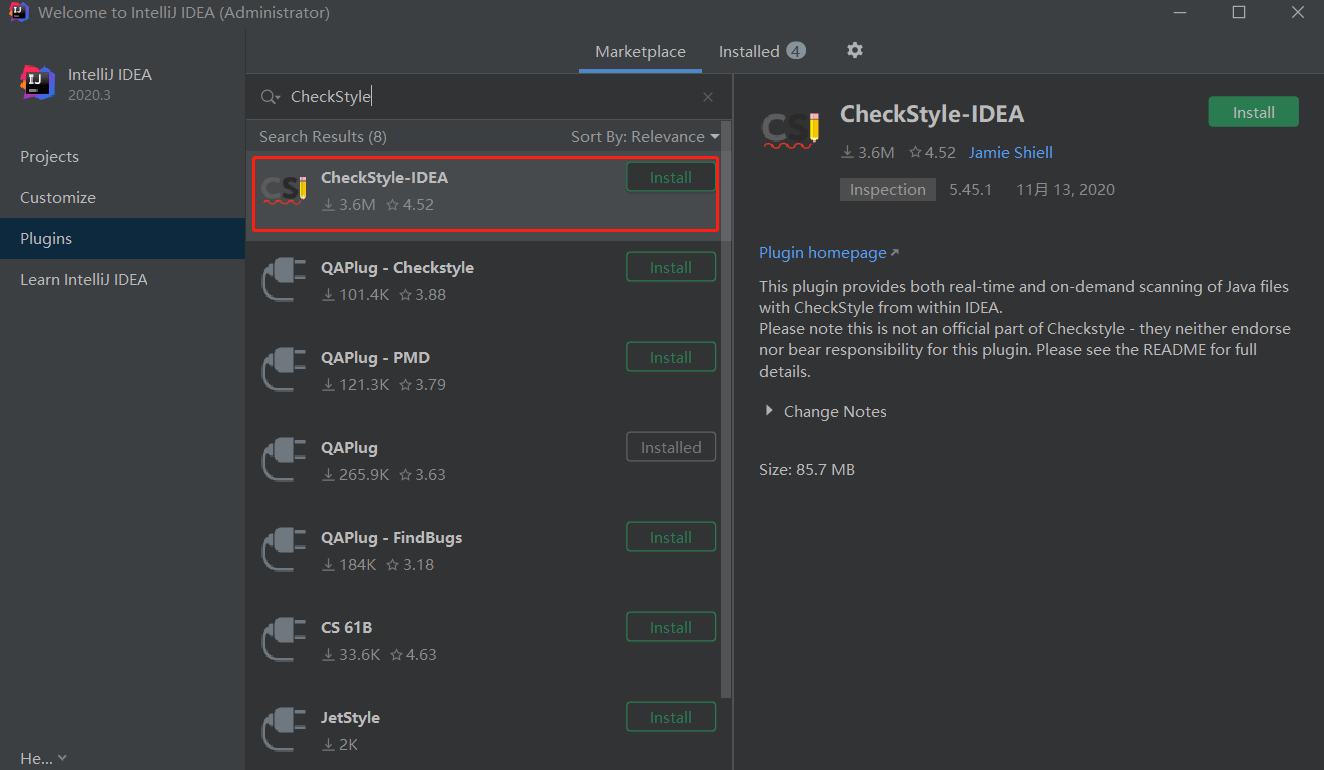
2 确认插件勾选生效

3 添加自定义规则
这里自定义一个check规则,需要一份check的xml配置文件,在文末提供。
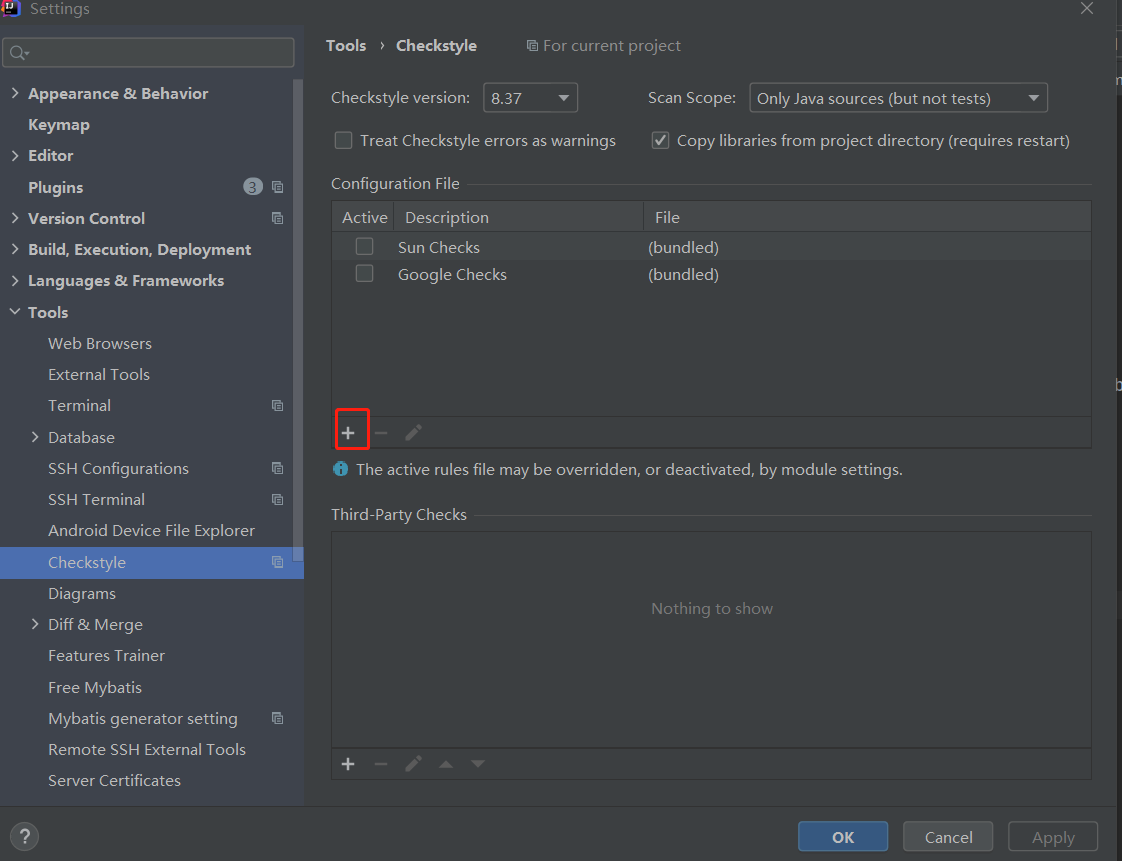
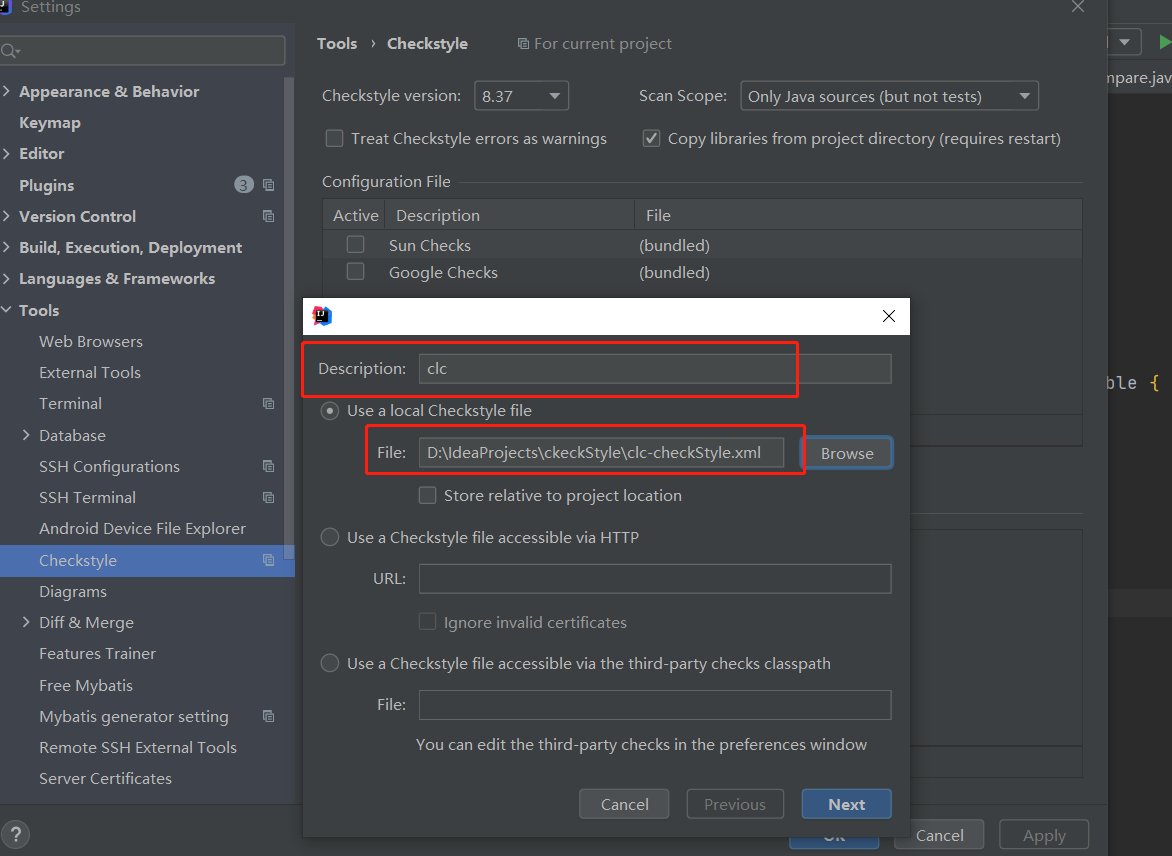
如果添加顺利,就跳过此图,如果遇到下图相同的报错,可以调整对应的版本号来解决
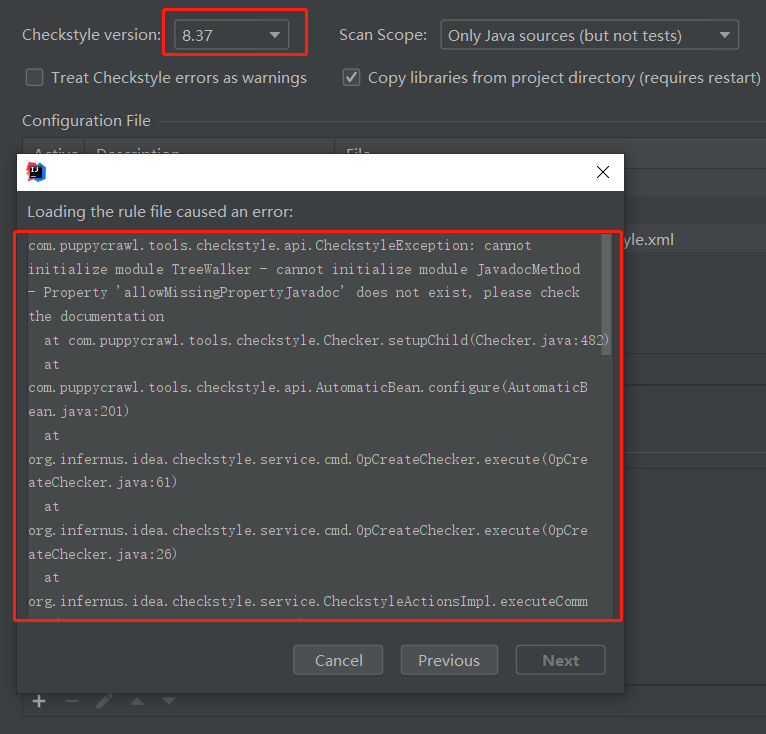
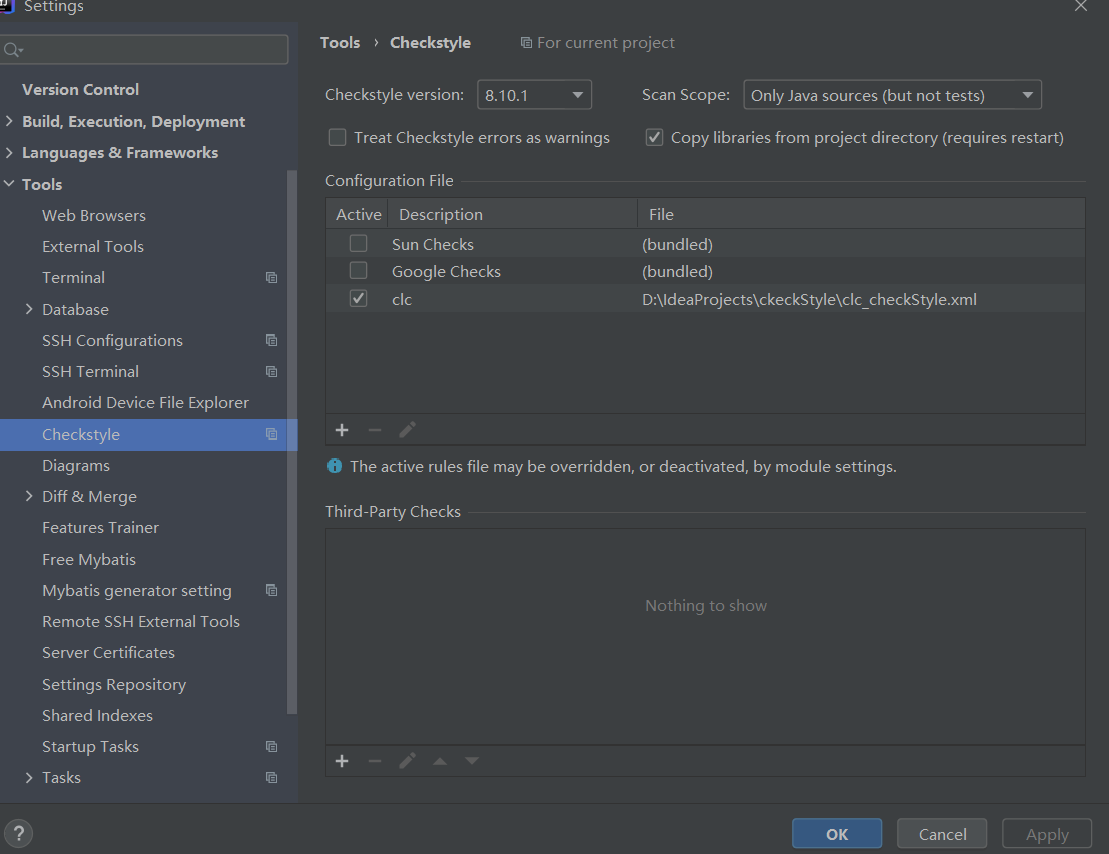
使用checkStyle做检查的方法

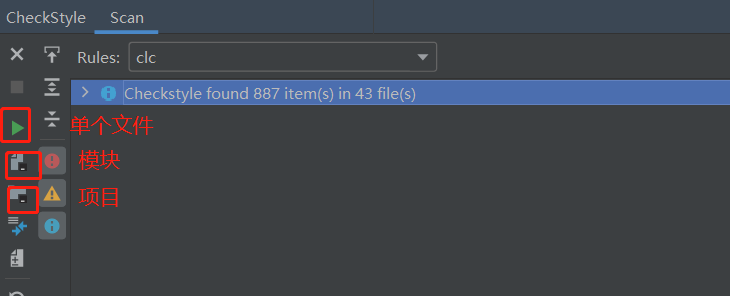
附录-check配置
<?xml version="1.0" encoding="UTF-8"?>
<!DOCTYPE module PUBLIC "-//Puppy Crawl//DTD Check Configuration 1.2//EN" "http://www.puppycrawl.com/dtds/configuration_1_2.dtd">
<!-- Generated by RHY @will_awoke -->
<module name="Checker">
<property name="charset" value="UTF-8"/>
<property name="severity" value="warning"/>
<!-- Checks for Size Violations. -->
<!-- 检查文件的长度(行) default max=2000 -->
<module name="FileLength">
<property name="max" value="2500"/>
</module>
<!-- Checks that property files contain the same keys. -->
<!-- 检查**.properties配置文件 是否有相同的key
<module name="Translation">
</module>
-->
<module name="TreeWalker">
<!-- Checks for imports -->
<!-- 必须导入类的完整路径,即不能使用*导入所需的类 -->
<module name="AvoidStarImport"/>
<!-- 检查是否从非法的包中导入了类 illegalPkgs: 定义非法的包名称-->
<module name="IllegalImport"/> <!-- defaults to sun.* packages -->
<!-- 检查是否导入了不必显示导入的类-->
<module name="RedundantImport"/>
<!-- 检查是否导入的包没有使用-->
<module name="UnusedImports"/>
<!-- Checks for whitespace
<module name="EmptyForIteratorPad"/>
<module name="MethodParamPad"/>
<module name="NoWhitespaceAfter"/>
<module name="NoWhitespaceBefore"/>
<module name="OperatorWrap"/>
<module name="ParenPad"/>
<module name="TypecastParenPad"/>
<module name="WhitespaceAfter"/>
<module name="WhitespaceAround"/>
-->
<!-- 检查类和接口的javadoc 默认不检查author 和version tags
authorFormat: 检查author标签的格式
versionFormat: 检查version标签的格式
scope: 可以检查的类的范围,例如:public只能检查public修饰的类,private可以检查所有的类
excludeScope: 不能检查的类的范围,例如:public,public的类将不被检查,但访问权限小于public的类仍然会检查,其他的权限以此类推
tokens: 该属性适用的类型,例如:CLASS_DEF,INTERFACE_DEF -->
<module name="JavadocType">
<property name="authorFormat" value="S"/>
<property name="scope" value="protected"/>
<property name="tokens" value="CLASS_DEF,INTERFACE_DEF"/>
</module>
<!-- 检查方法的javadoc的注释
scope: 可以检查的方法的范围,例如:public只能检查public修饰的方法,private可以检查所有的方法
allowMissingParamTags: 是否忽略对参数注释的检查
allowMissingThrowsTags: 是否忽略对throws注释的检查
allowMissingReturnTag: 是否忽略对return注释的检查 -->
<module name="JavadocMethod">
<property name="scope" value="private"/>
<property name="allowMissingParamTags" value="false"/>
<property name="allowMissingThrowsTags" value="false"/>
<property name="allowMissingReturnTag" value="false"/>
<property name="tokens" value="METHOD_DEF"/>
<property name="allowUndeclaredRTE" value="true"/>
<property name="allowThrowsTagsForSubclasses" value="true"/>
<!--允许get set 方法没有注释-->
<property name="allowMissingPropertyJavadoc" value="true"/>
</module>
<!-- 检查类变量的注释
scope: 检查变量的范围,例如:public只能检查public修饰的变量,private可以检查所有的变量 -->
<module name="JavadocVariable">
<property name="scope" value="private"/>
</module>
<!--option: 定义左大括号'{'显示位置,eol在同一行显示,nl在下一行显示
maxLineLength: 大括号'{'所在行行最多容纳的字符数
tokens: 该属性适用的类型,例:CLASS_DEF,INTERFACE_DEF,METHOD_DEF,CTOR_DEF -->
<module name="LeftCurly">
<property name="option" value="eol"/>
</module>
<!-- NeedBraces 检查是否应该使用括号的地方没有加括号
tokens: 定义检查的类型 -->
<module name="NeedBraces"/>
<!-- Checks the placement of right curly braces ('}') for else, try, and catch tokens. The policy to verify is specified using property option.
option: 右大括号是否单独一行显示
tokens: 定义检查的类型
<module name="RightCurly">
<property name="option" value="alone"/>
</module> -->
<!-- 检查在重写了equals方法后是否重写了hashCode方法 -->
<module name="EqualsHashCode"/>
<!-- Checks for illegal instantiations where a factory method is preferred.
Rationale: Depending on the project, for some classes it might be preferable to create instances through factory methods rather than calling the constructor.
A simple example is the java.lang.Boolean class. In order to save memory and CPU cycles, it is preferable to use the predefined constants TRUE and FALSE. Constructor invocations should be replaced by calls to Boolean.valueOf().
Some extremely performance sensitive projects may require the use of factory methods for other classes as well, to enforce the usage of number caches or object pools. -->
<module name="IllegalInstantiation">
<property name="classes" value="java.lang.Boolean"/>
</module>
<!-- 代码缩进
<module name="Indentation">
</module> -->
<!-- Checks for redundant exceptions declared in throws clause such as duplicates, unchecked exceptions or subclasses of another declared exception.
检查是否抛出了多余的异常
<module name="RedundantThrows">
<property name="logLoadErrors" value="true"/>
<property name="suppressLoadErrors" value="true"/>
</module>
-->
<!-- Checks for overly complicated boolean expressions. Currently finds code like if (b == true), b || true, !false, etc.
检查boolean值是否冗余的地方
Rationale: Complex boolean logic makes code hard to understand and maintain. -->
<module name="SimplifyBooleanExpression"/>
<!-- Checks for overly complicated boolean return statements. For example the following code
检查是否存在过度复杂的boolean返回值
if (valid())
return false;
else
return true;
could be written as
return !valid();
The Idea for this Check has been shamelessly stolen from the equivalent PMD rule. -->
<module name="SimplifyBooleanReturn"/>
<!-- Checks that a class which has only private constructors is declared as final.只有私有构造器的类必须声明为final-->
<module name="FinalClass"/>
<!-- Make sure that utility classes (classes that contain only static methods or fields in their API) do not have a public constructor.
确保Utils类(只提供static方法和属性的类)没有public构造器。
Rationale: Instantiating utility classes does not make sense. Hence the constructors should either be private or (if you want to allow subclassing) protected. A common mistake is forgetting to hide the default constructor.
If you make the constructor protected you may want to consider the following constructor implementation technique to disallow instantiating subclasses:
public class StringUtils // not final to allow subclassing
{
protected StringUtils() {
throw new UnsupportedOperationException(); // prevents calls from subclass
}
public static int count(char c, String s) {
// ...
}
}
<module name="HideUtilityClassConstructor"/>
-->
<!-- Checks visibility of class members. Only static final members may be public; other class members must be private unless property protectedAllowed or packageAllowed is set.
检查class成员属性可见性。只有static final 修饰的成员是可以public的。其他的成员属性必需是private的,除非属性protectedAllowed或者packageAllowed设置了true.
Public members are not flagged if the name matches the public member regular expression (contains "^serialVersionUID$" by default). Note: Checkstyle 2 used to include "^f[A-Z][a-zA-Z0-9]*$" in the default pattern to allow CMP for EJB 1.1 with the default settings. With EJB 2.0 it is not longer necessary to have public access for persistent fields, hence the default has been changed.
Rationale: Enforce encapsulation. 强制封装 -->
<module name="VisibilityModifier"/>
<!-- 每一行只能定义一个变量 -->
<module name="MultipleVariableDeclarations">
</module>
<!-- Checks the style of array type definitions. Some like Java-style: public static void main(String[] args) and some like C-style: public static void main(String args[])
检查再定义数组时,采用java风格还是c风格,例如:int[] num是java风格,int num[]是c风格。默认是java风格-->
<module name="ArrayTypeStyle">
</module>
<!-- Checks that there are no "magic numbers", where a magic number is a numeric literal that is not defined as a constant. By default, -1, 0, 1, and 2 are not considered to be magic numbers.
<module name="MagicNumber">
</module>
-->
<!-- A check for TODO: comments. Actually it is a generic regular expression matcher on Java comments. To check for other patterns in Java comments, set property format.
检查是否存在TODO(待处理) TODO是javaIDE自动生成的。一般代码写完后要去掉。
-->
<module name="TodoComment"/>
<!-- Checks that long constants are defined with an upper ell. That is ' L' and not 'l'. This is in accordance to the Java Language Specification, Section 3.10.1.
检查是否在long类型是否定义了大写的L.字母小写l和数字1(一)很相似。
looks a lot like 1. -->
<module name="UpperEll"/>
<!-- Checks that switch statement has "default" clause. 检查switch语句是否有‘default’从句
Rationale: It's usually a good idea to introduce a default case in every switch statement.
Even if the developer is sure that all currently possible cases are covered, this should be expressed in the default branch,
e.g. by using an assertion. This way the code is protected aginst later changes, e.g. introduction of new types in an enumeration type. -->
<module name="MissingSwitchDefault"/>
<!--检查switch中case后是否加入了跳出语句,例如:return、break、throw、continue -->
<module name="FallThrough"/>
<!-- Checks the number of parameters of a method or constructor. max default 7个. -->
<module name="ParameterNumber">
<property name="max" value="5"/>
</module>
<!-- 每行字符数 -->
<module name="LineLength">
<property name="max" value="200"/>
</module>
<!-- Checks for long methods and constructors. max default 150行. max=300 设置长度300 -->
<module name="MethodLength">
<property name="max" value="300"/>
</module>
<!-- ModifierOrder 检查修饰符的顺序,默认是 public,protected,private,abstract,static,final,transient,volatile,synchronized,native -->
<module name="ModifierOrder">
</module>
<!-- 检查是否有多余的修饰符,例如:接口中的方法不必使用public、abstract修饰 -->
<module name="RedundantModifier">
</module>
<!--- 字符串比较必须使用 equals() -->
<module name="StringLiteralEquality">
</module>
<!-- if-else嵌套语句个数 最多4层 -->
<module name="NestedIfDepth">
<property name="max" value="3"/>
</module>
<!-- try-catch 嵌套语句个数 最多2层 -->
<module name="NestedTryDepth">
<property name="max" value="2"/>
</module>
<!-- 返回个数 -->
<module name="ReturnCount">
<property name="max" value="5"/>
<property name="format" value="^$"/>
</module>
</module>
</module>
CLC